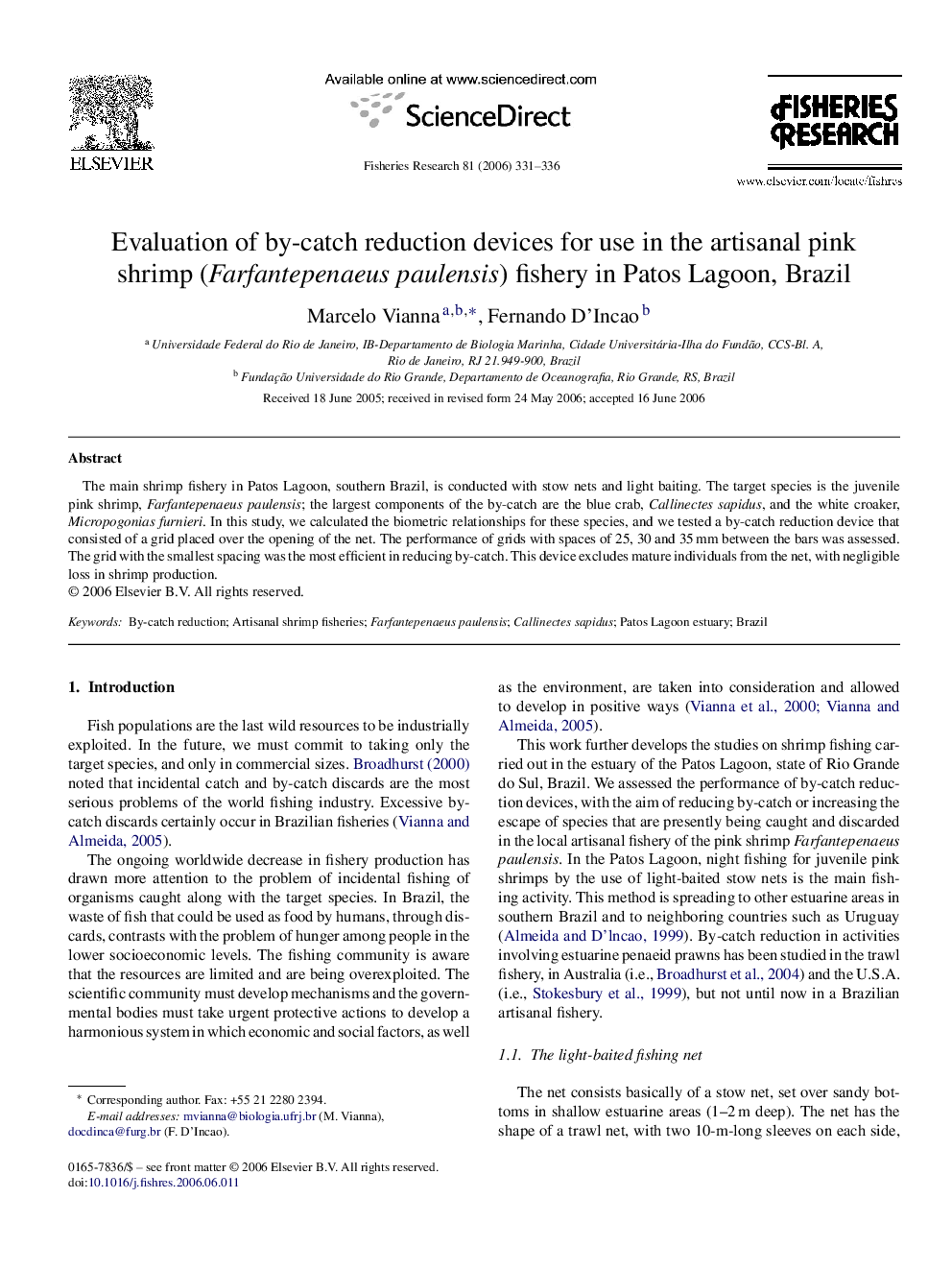| Article ID | Journal | Published Year | Pages | File Type |
|---|---|---|---|---|
| 4544909 | Fisheries Research | 2006 | 6 Pages |
Abstract
The main shrimp fishery in Patos Lagoon, southern Brazil, is conducted with stow nets and light baiting. The target species is the juvenile pink shrimp, Farfantepenaeus paulensis; the largest components of the by-catch are the blue crab, Callinectes sapidus, and the white croaker, Micropogonias furnieri. In this study, we calculated the biometric relationships for these species, and we tested a by-catch reduction device that consisted of a grid placed over the opening of the net. The performance of grids with spaces of 25, 30 and 35 mm between the bars was assessed. The grid with the smallest spacing was the most efficient in reducing by-catch. This device excludes mature individuals from the net, with negligible loss in shrimp production.
Related Topics
Life Sciences
Agricultural and Biological Sciences
Aquatic Science
Authors
Marcelo Vianna, Fernando D’Incao,
